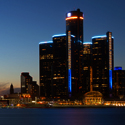Workplace Law Lowdown | Trump NLRB Clarifies Rules on Gripes
02/12/19
Every company probably has employees who gripe once in a while, if not all the time. For the past 34 years, the National Labor Relations Board (“NLRB”) has grappled with the issue of when a personal gripe transcends into concerted activity protected by the National Labor Relations Act (“NLRA”). The Obama NRLB weaponized personal gripes into concerted activity protected by federal law. On January 11, 2019, the NLRB, in Alstate Maintenance, 367 NLRB No. 68 (2019), put the personal gripe in proper perspective.
The NLRB protects the right of employees to engage in protected concerted activity. Historically, “concerted” required action by two or more individuals. Personal gripes are not protected. The difficulty is determining which gripes are personal and which are group-based and protected.
Prior to President Obama’s appointments to the NLRB, the NLRB required that an individual claiming he or she was acting for a group provide evidence that he or she was “engaged in with or on the authority of other employees, and not solely by and on behalf of the employee himself.” Id. at *2. “[A]n individual employee who raises a workplace concern with a supervisor or manager is engaged in concerted activity if there is evidence of ‘group activities’ – e.g., prior or contemporaneous discussion of the concern between or among members of the workforce – warranting a finding that the employee was indeed bringing to management’s attention a ‘truly group complaint,’ as opposed to a purely personal grievance.” Id. at *3. A single employee’s efforts to “induce group action” is also considered concerted activity.
In Alstate, Trevor Greenidge was employed as a skycap assisting airline passengers with luggage. Most of his compensation came from passenger tips. In July 2013, Greenidge, working with three other skycaps, was asked to assist with the French soccer team’s equipment. He complained, “We did a similar job a year prior and we didn’t receive a tip for it.” When the soccer team’s van arrived, the skycaps walked away because they were anticipating a small tip. Managers and inside baggage handlers completed a significant share of the work before Greenidge and the other three skycaps came to their assistance. After the job was completed, the soccer team gave the skycaps an $83.00 tip.
As would be expected, the managers were upset and embarrassed by the skycaps. The four skycaps were terminated and Greenidge’s discharge letter stated:
You were indifferent to the customer and verbally make [sic] comments about the job stating that you would get no tip or a very small tip or it is a very small tip. Trevor, you made this comments [sic] in front of other skycaps, [a manager] and the station manager of Lufthansa.
Greenidge filed an unfair labor practice charge with the NLRB alleging he was discharged for engaging in concerted activities with the other skycaps. Although he was not a designated spokesman or a person who brought a group complaint to the attention of management, Greenidge claimed that because the tip comment was made in front of other employees, he was engaged in mutual aid and protection with them. The Regional Office of the NLRB agreed and a complaint was issued against the employer seeking reinstatement and back pay.
Greenidge had a claim based upon prior decisions by the Obama NLRB. In WorldMark by Wyndham, 356 NLRB 765 (2011), the Obama NLRB found an employee engaged in protected concerted activity when he raised questions about a new dress code policy requiring him to tuck in his Hawaiian shirt. The NLRB had found concerted activity because the questions/gripes were raised in front of other employees. The rule established by WorldMark was that “an employee who protests publicly in a group meeting engaged in initiating group action.” Alstate at *6.
Rejecting and overruling WorldMark, the Alstate Board, now with members appointed by President Trump, concluded that Greenidge did not engage in concerted activity based on several grounds:
1. There was no assertion that the employee was bringing a truly group complaint to the attention of management.
2. There was no evidence that the tipping habits of soccer players “or anyone else” had been a topic of conversation among the skycaps.
3. Greenidge’s use of the word “we” did not show that the skycaps had discussed the incident among themselves. It was only evidence that the skycaps had been “stiffed” as a group the prior year.
4. The statement did not “in and of itself…demonstrate that Greenidge was seeking to initiate or induce group action.…” Greenidge testified that his comment was not aimed at changing his employer’s policies or practices; it was “simply an offhand gripe about [Greenidge’s] belief that French soccer players were poor tippers.” Id. at 4.
Why is this case about a gripe so important? Employees will continue to gripe and employers will continue to tire of those gripes. Employers must be careful when considering discipline in response to gripes. Gray areas still exist but, for now, the rule to follow is, “to be concerted activity, an individual employee’s statement to a supervisor or manager must either bring a truly group complaint regarding a workplace issue to management’s attention, or the totality of the circumstances must support a reasonable inference that in making the statement, the employee was seeking to initiate, induce or prepare for group action.” Id. at *7.
Contact any member of Bodman’s Workplace Law Group with questions. To view a pdf of the article, click here.





